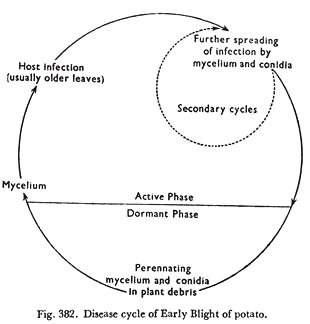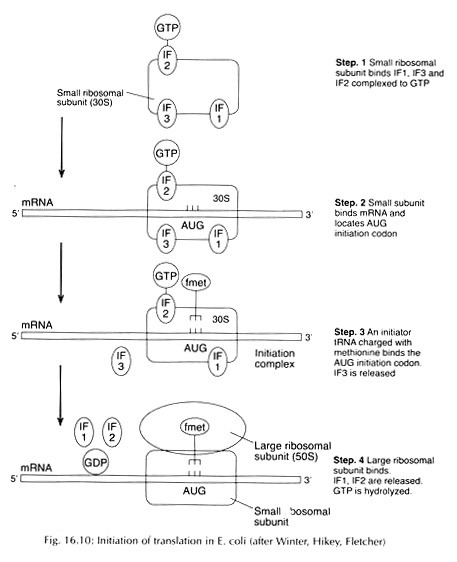During crossing over the homologous chromosomes interchange parts of chromatids between them. It results in the recombination of linked genes.
This process is known as recombination. The breeding experiments carried out on maize showed that even the linked genes do not always remain together during inheritance.
Sometimes they separate with an interchange of alleles due to exchange of parts between chromatids of homologous chromosomes at the time of meiosis. This results in the formation of new or non-parental combination of the old genes.
This phenomenon of new combination of old general known as recombination of genes and the offspring’s with new combination of characters are known as recombinant types. The results of breeding experiment of maize showed that the new combination or non-parental combination was 3.6%. This is the percentage of recombination of genes.
Frequency (or percentage) of Recombination:
The frequency of recombination or the crossing over of any two genes is the number of crossovers formed between them. It is directly proportional to the distance between the two genes. Frequency of crossing over is used as an index of relative distances between the genes on a chromosome.
The frequency of crossing over or the percentage of recombination can be determined:
(i) By counting the number of chiasmata formed during diplotene of the prophase 1 of meiosis under the microscope.
(ii) By conducting controlled experiments and calculating the frequencies of parental and recombinant types of offspring’s.
Frequency of Recombination:
No. of Recombinants in the progeny of test cross /Total no. of progeny of the test cross × 100
Example. A fully heterozygous grey bodied, normal winged female F] Drosophila was crossed with a black bodied and vestigial winged male.
It gave the following results:
Sex Chromosomes:
There are two types of chromosomes present within the nucleus of higher animals. They are autosomes and sex chromosomes. Autosomes bear genes for characters other than the sex while sex chromosomes or allosomes determine the sex of the animal. While the sex chromosomes are generally formed of a pair of chromosomes, the remaining chromosomes are designated as autosomes. In man, out of a total of 23 pairs of chromosomes, there are 22 pairs of autosomes and one pair of sex chromosomes [Fig. 5.12(A)].
The German biologist Henking (1891) first discovered X chromosome (X for unknown) in certain insects. Mc Clung (1902), an American Zoologist, demonstrated that X chromosome was concerned with the determination of sex in grass hopper. Later Stevens (1905) observed that the diploid cell of female had a pair of X chromosome.
Further studies showed that in males of some species, the X chromosome become paired with another chromosome (having different size and shape) during meiosis. This chromosome was called as the Y chromosome. Since X and Y chromosomes are related to the sex determination of an individual, they were termed as sex chromosomes. Later other types of sex chromosomes were discovered.
Types of Sex Chromosomes:
The sex chromosomes are variously named as X and Y chromosomes (man and Drosophila), Z and W chromosomes (birds and moths), odd chromosomes, idiosomes, heterosomes or allosomes. The genes which determine the sex are being located on these chromosomes. The two members of this pair are often dissimilar in male and are represented as X and Y chromosomes or as Z and W chromosomes.
(a) XX Female and XY Male Types:
This type of sex mechanism is found in Drosophila (fruit fly) and majority of mammals. In this type, the female is homogametic (XX) and male is heterogametic (XY) consisting of two dissimilar chromosomes X and Y (for details refer to sex determination).
(b) ZW Female and ZZ Male Type:
In butterflies and birds, the female is heterogametic having dissimilar Z and W chromosomes whereas the male is homogametic having similar ZZ chromosomes (It is a convention to designate female as ZW instead of XY and male as ZZ instead of XX). The situation here is just reverse to first type.
(c) XX Female and XO Male type:
This type of sex mechanism is observed in insects especially in grasshopper. In male there is no mate for X chromosome, hence the name XO is given, there is no Y chromosome. In females there are two similar or homomorphic sex chromosomes XX.
Out of two sex chromosomes in female mammals, one shows itself in the form of a dark staining body in the interphase nucleus. It is called as barr body in male barr body is not observed. Thus barr body helps in determination of sex of embryo. While majority of sex-linked genes are located on the X chromosomes, few genes are present on Y-chromosomes.
Some of these genes are allelic to some of the genes of the X chromosome these are called incompletely sex linked genes. There are also few genes in the non-homologous portion of the Y chromosome of male (known as Y-linked genes) which show very unusual method of inheritance.


